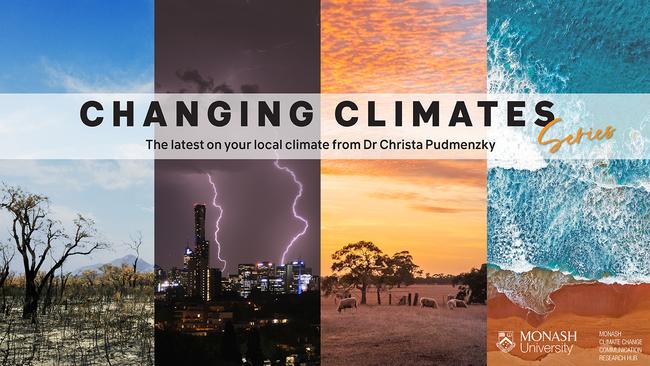Digging up new ideas: carbon sequestration not the sole solution
Using trees to store carbon is a useful strategy in the race to net zero, but may not be the sole solution, explains Dr Christa Pudmenzky.

Hyperlocal
Don't miss out on the headlines from Hyperlocal. Followed categories will be added to My News.
Next week on July 30 we celebrate National Tree Day.
On this day, thousands volunteer their time to plant trees and promote the importance of protecting our environment.
From acacia and Tasmanian blue gum, to bottlebrush and prehistoric Wollemi pines, trees are the lungs of the Earth, exhaling the oxygen that supports life on our planet.
Forests make up 16 per cent of Australia's land area, and cover more than 125 million hectares.
With over 24,000 tree species, they provide habitat for many of our native animals, like the eucalyptus-munching koala and our cackling kookaburras.
Not only that, they hold important cultural significance for First Nations Australians.
Aboriginal and Torres Strait Islander peoples have a deep connection to trees, using them for food, shelter, medicine and tools.
Trees also help to cool our environment, keep soil healthy, and stabilise the ground against erosion by building complex root systems.
One of their most important superpowers, however, is the ability to pull carbon out of the atmosphere and store it in their trunks, leaves and roots.
Forests are natural carbon sinks – systems that absorb more carbon than they release.
And, it is estimated that a mammoth 22 billion tonnes of carbon is stored in Australia's forests.
It takes just four adult trees to store the same amount of carbon a car produces in a whole year.
But why is this special ability so useful?
The race against rising temperatures
Since the industrial revolution, human activities – namely the burning of fossil fuels – have rapidly increased the concentration of greenhouse gases in our atmosphere.
As emissions have risen, so too have our temperatures, so much so that the global average temperature has increased by about 1.1C since pre-industrial levels.
Data from the Bureau of Meteorology shows a similar level of warming across Australia.
For example, in Gladstone the average July night is 1.2C warmer compared to the early 1970s.

Branching out from carbon credits
Our forests and their carbon-sucking superpowers have played an important role in slowing the rate of this warming.
During the 2015 United Nations Climate Change Conference, Australia was among 196 parties to sign the Paris Agreement – a legally binding treaty with the goal to limit global temperature rise within 1.5C of pre-industrial levels.
Since then, Queensland has committed to a 30 per cent reduction in emissions from 2005 levels by 2030, and net zero by 2050.
Historically, Australia has relied on large-scale tree planting as a key strategy in achieving such emissions reduction.
And in Australia's most recent emissions reduction plan, forest offsets are playing a big part in our roadmap for achieving net-zero.
These refer to activities which reduce, remove or capture emissions to compensate for those occurring elsewhere.
Offsetting typically involves purchasing 'carbon credits', where one credit is equal to a tonne of carbon dioxide or equivalent amount of another greenhouse gas.
So, as our forests work tirelessly to absorb emissions, businesses are purchasing credits to negate their own footprint.
However, this approach can be risky.
There is a limit to the amount of carbon our towering, leafy giants can capture.
If our current rate of emissions continues, there won't be enough trees to offset the carbon dioxide we produce.
In fact, even if we planted as many trees as our earth could hold, we would only capture and store around 10 years of emissions at current rates.
Moreover, this approach shifts attention away from the root of the problem – our reliance on fossil fuels.
Extreme weather risks unleashing carbon
Changing climate extremes gives us even more reason to limit pressure on our forests.
There is a misconception that carbon emissions stored deep within the sturdy branches of trees are safe.
Unfortunately, trees do not eliminate the carbon, they merely hold it for a period of time.
This means if the ecosystem is disturbed – say by a bushfire – trees will release their carbon.
For instance, during Black Summer, one of Australia's most catastrophic bushfire seasons, more than seven million hectares of eucalyptus forest and woodland burned.
These events released around 900 million tonnes of carbon dioxide into the atmosphere, equivalent to an entire year of global commercial air travel.
While our forests are built to withstand fire, severe events like these reduce their capacity to recover and store carbon.
This creates a positive feedback loop in which increasing temperatures, caused by human-induced climate change, disrupt our carbon sinks, resulting in the release of more carbon into the atmosphere.
So with extreme weather becoming more frequent and intense due to climate change, relying on our trees has become a tricky business.
Time to branch out
With all this in mind, what is the best approach to tackling climate change?
Rethinking our energy systems is crucial.
In particular, transitioning away from fossil fuels into renewable energy sources like wind and solar.
At the individual level, there are lots of simple options that won't break the bank.
These include switching from gas to electric appliances in the home, utilising public transport, sourcing food locally, and reducing household waste.
In short, there are plenty of ways we can permanently lower emissions, and protect our beloved trees.
In the meantime, find a site near you and join in on the action this National Tree Day.
Or simply switch off, get outside, and enjoy some of our stunning nature.
See if you can spot some of the critters living in the branches along the way.
Want more information on how your climate is changing? Check out the last article in this series.
Dr Christa Pudmenzky is a climate scientist at the University of Southern Queensland.
This column is part of a collaboration between Monash University and News Corp to deliver hyperlocal weather and climate information.

